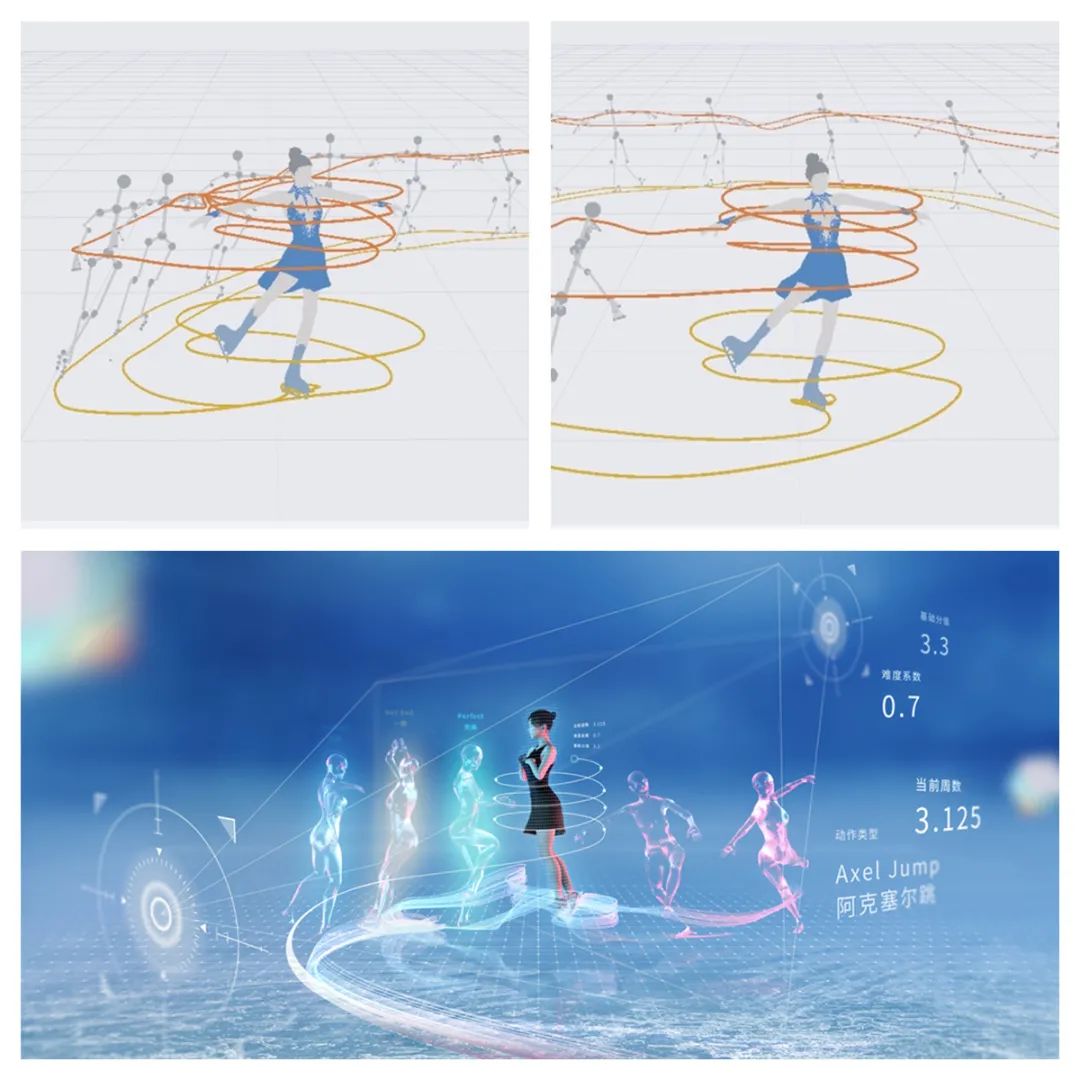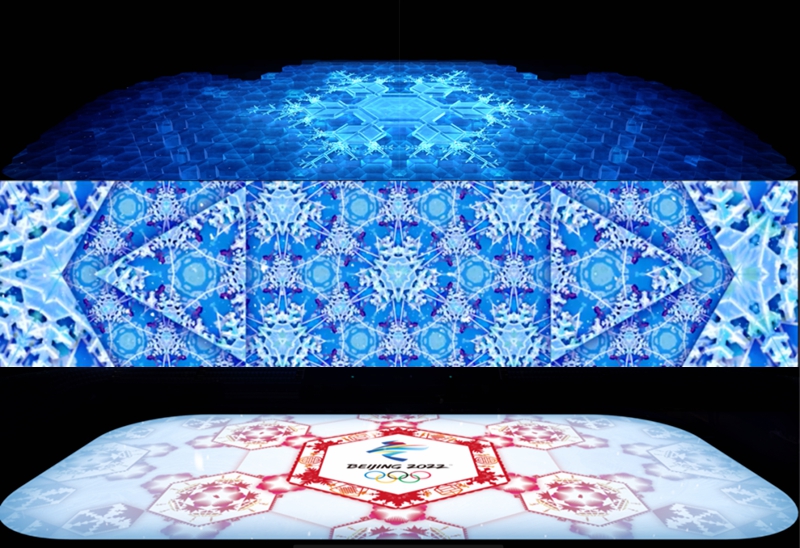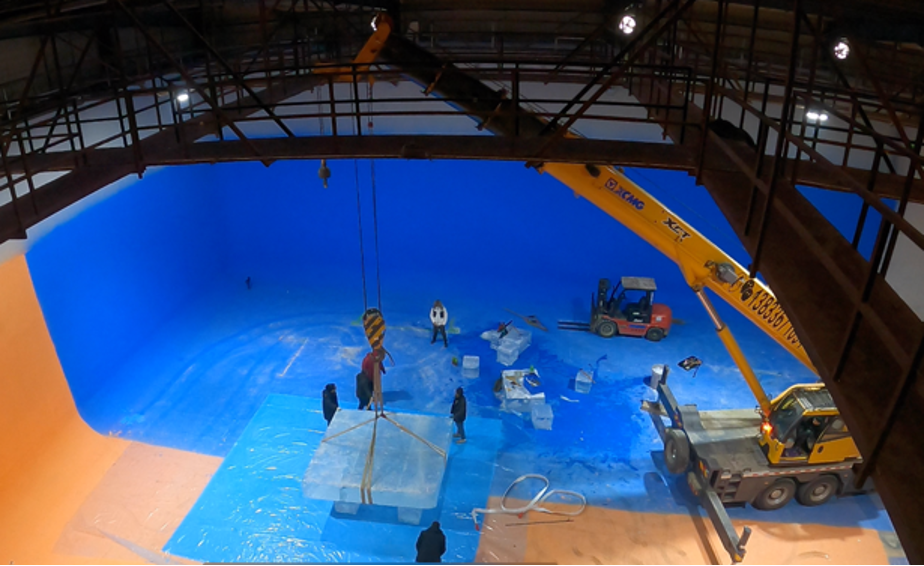China.org.cn , March 29, 2022
On Feb. 20, the world's top figure skaters performed at the Beijing Winter Olympics gala exhibition at the Capital Indoor Stadium. Besides the skaters, the audience was also amazed by a high-tech visual spectacle on the ice during the half-time show.

"We were excited about using artificial intelligence to assist the design creation, and set ourselves a series of goals for the work," said professor Wu Qiong from the Department of Information Art & Design under the Academy of Arts & Design at Tsinghua University (AADTHU).
"It should be an innovative form of figure skating performance based on Intel's 3D Athlete Tracking (3DAT) technology, so that the audience could experience the charm of figure skating and feel the fashion empowered by technology, and it should use elements from Chinese culture, such as patterns, colors, compositions and music, to build an international visual language and provide an audio-visual feast on ice to audiences around the world," said Wu, who served as the project leader of the ice-based visual projection for the figure skating gala exhibition of the Beijing 2022 Winter Olympics.
The Olympic Games is a grand sporting and cultural event. Using culture and technology to create new ways of displaying the Winter Olympic culture has always been an important goal of the Beijing 2022 organizing committee (BOCOG). Xu Yingqing, also a professor in the AADTHU's Department of Information Art & Design and director of the Future Lab, first proposed combining art and technology, a direction that proved a hit with Intel's Winter Olympics project team, which worked on the project with Tsinghua's team.
In July 2021, after more than three months of brainstorming, discussions and iterations, it was finally decided to use the form of ice surface projection at one of the most interesting events of the Winter Olympics, the figure skating gala exhibition, to make it an important project for displaying sports culture, and strive to have it broadcast live globally.
The BOCOG laid out its requirements for the show: first, it must match the theme of the figure skating gala exhibition and work in a live environment; and second, it must be innovative and provide viewers with a new experience.

The assignment went to professor Wu, and she later invited her colleague associate professor Wang Zhigang from the Department of Information Art & Design of AADTHU, professor Liu Shixia from the School of Software at Tsinghua University, and associate professor Li Zijin from the Central Conservatory of Music to join the team. The high-tech visual show used 3DAT as the foundation to create 3D models of athletes' movements and trajectories, while Wu's team added artistic touches to make the presentation more innovative and entertaining.
"The movements and poses formed after analysis of the data, and the figure skating trajectories formed by calculation, gave us a new vision," she said of the integration of art and tech. "We presented these movements and trajectories using dots and lines to form a visual enhancement for athletes, which can better demonstrate the strength, speed and artistry of figure skating."

The minute-long show at the gala exhibition was directed by professor Wang Zhigang, who recalled the team adopted the snowflake as the essential creative element and made full use of the special ice surface to create stunning 3D effects with a special perspective. The aesthetic styles ranged from romantic to magnificent, stirring up the audience's emotions for the show and their passion for the sport. An animated pair of male and female athletes danced during the show, which not only showcased the cutting-edge marvel uniting tech and arts, but also sent a message of global unity, integration and harmony.
Hidden within the show's visual designs were many subtle details, with the ice-based kaleidoscope projection featuring traditional Chinese elements from blue and white porcelain, Dunhuang patterns, Chinese knots, the Great Wall, auspicious tigers and peony flowers, to Olympic-themed motifs like the five rings, olive branches, ribbons, as well as planet Earth and snowflakes. Each frame of the animated short underwent multiple discussions and revisions.
To best present the kaleidoscope pattern, the production team set up a studio in Beijing's suburbs, where they constructed a real ice surface and invited athletes to come perform so that the team could record live shots to later integrate with the 3D animation.
Recalling what most impressed her during the project, professor Wu Qiong believes that it was the cooperation between the teams to integrate art and technology. The project involved multiple areas: computing, visualization, music, design, 3D production and filming. Team members in different areas have their own expressions and focuses, therefore the cross-over team needed to especially emphasize precise understanding of the goals during the cooperation, Wu noted.

"When it comes to solving problems, first, of course is communication, and second is finding where the cooperation intersects and finding an intuitive form that everyone can understand and express," she said. "When everyone's goals and concepts are the same, the team can move in the same direction, help each other, and move toward the final result."
